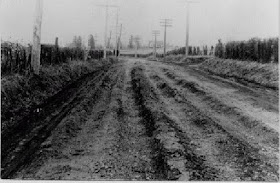 |
| Invitation for the inaugural WWRR train, Oct. 19, 1872 |
There were three railroad lines built through MCH in the 1800's, two along its southern portion and one up its eastern side. The two southerly ones -- the PW&B (later the PB&W, now the Amtrak line) and the Baltimore and Ohio (now the CSX line) -- were just portions of much longer lines. There were stations here, but mostly they just passed through, sort of like I-95 through Delaware today. The third line, though, weaving its way along Red Clay Creek and then away to the northwest, was much more of a local business and passenger line. More Kirkwood Highway than I-95. This was the Wilmington & Western Railroad, and it was a good example of how a business can be important without being, itself, particularly successful.

